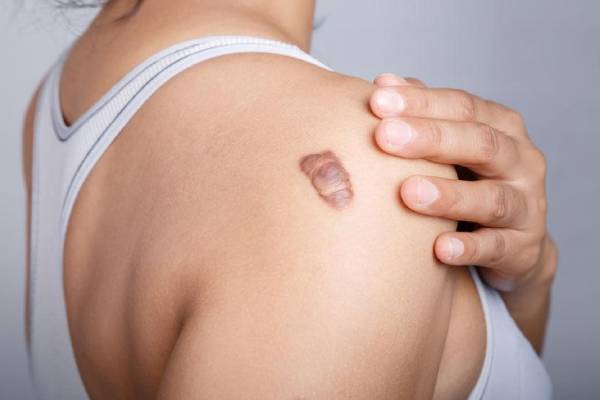What are keloids?
Keloids are a type of raised scar. They occur where the skin has healed after an injury. They can grow to be much larger than the original injury that caused the scar. They are not at all common, but are more likely for people who have dark skin.
Anything that can cause a scar can cause a keloid. This includes being burned, cut, or having severe acne. Keloids can also develop after you get a body piercing, a tattoo, or have surgery. Keloids sometimes show up 3 months or more after your skin is injured. Some continue to grow for years.
Keloids come from the overgrowth of scar tissue. Keloid scars tend to be larger than the original wound itself. They may take weeks or months to develop fully.

The symptoms of a keloid can include:
- a localized area that is flesh-colored, pink, or red
- a lumpy or ridged area of skin that’s usually raised
- an area that continues to grow larger with scar tissue over time
- an itchy patch of skin
While keloid scars may be itchy, they’re usually not harmful to your health. You may experience discomfort, tenderness, or possible irritation from your clothing or other forms of friction.
Keloid scarring can form on large areas of your body, but this is generally rare. When it happens, the hardened, tight scar tissue may restrict movement.
Keloids are often more of a cosmetic concern than a health one. You may feel self-conscious if the keloid is very large or in a highly visible location, such as on an earlobe or the face
What causes keloids?
After your skin is injured, your cells try to repair it by forming a scar. In some people, the scar tissue keeps forming long after the wound heals. This extra scar tissue causes the raised area on your skin that is called a keloid. Doctors still aren’t sure why some people’s skin scars this way.
Many different types of skin injuries can lead to a keloid. These include:
- cuts
- puncture wounds
- surgical scars
- severe acne
- chicken pox
- insect bites
- injection sites
- piercings
- tattoos
Keloids treatment
The goal of treatment is to flatten, soften, or shrink the keloid. Keloids can be hard to get rid of. Sometimes they return after treatment. Many doctors will use a combination of treatments for the best results. Treatments include the following:
- Corticosteroid shots. The medicine in these shots helps shrink the scar.
- Freezing the scar. Called cryotherapy, this can be used to reduce the hardness and size of the keloid. It works best on small keloids.
- Wearing silicone sheets or gel over the scar. This can help flatten the keloid.
- Laser therapy. This can help flatten the keloid. It also can fade the color.
- Surgical removal. This involves cutting out the keloid. Most keloids will return after this treatment.
- Pressure treatment. After keloid surgery, keeping pressure on the area reduces blood flow. This can help keep a keloid from returning.
Different treatments work for different people. Dr. Vishal Gore at Total Skin Pro Clinic suggest you what is best treatment you are needed. So book an appointment with best dermatologist in Swargate if you face problem with keloids.


